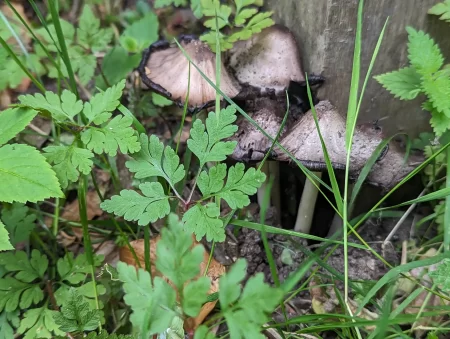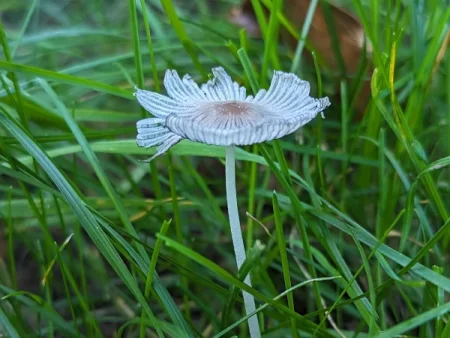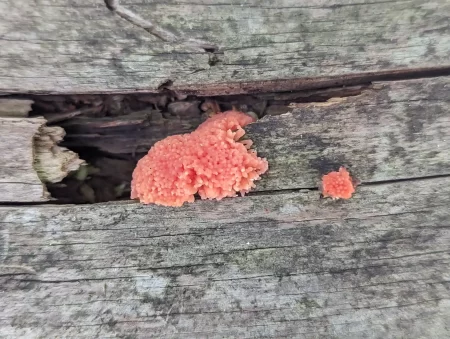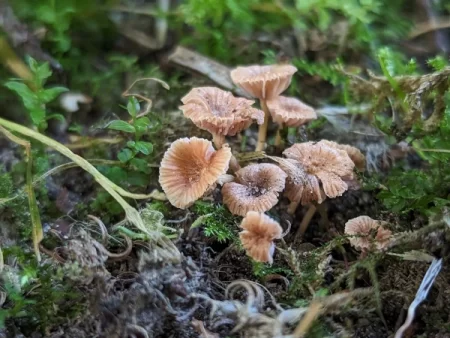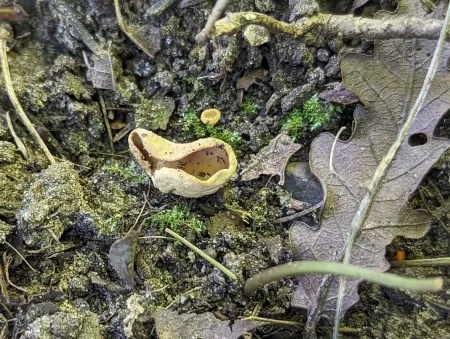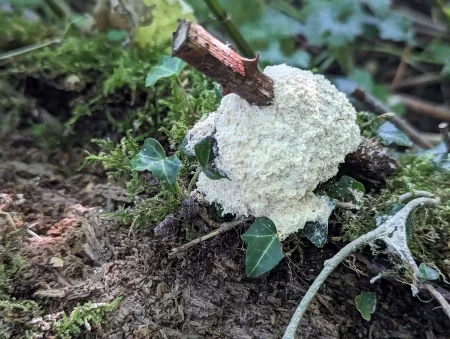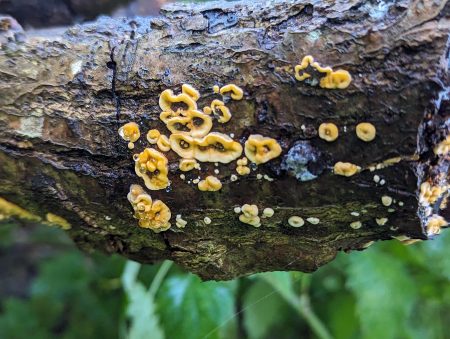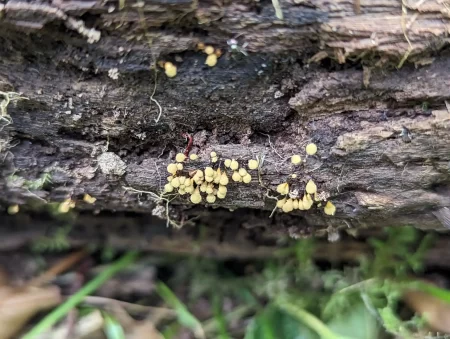Today was mild and breezy and some of the more shaded areas were damp.
Entrance Area
Arriving at the car park, I saw Coprinopsis atramentaria (Fig. 1.0) by the path leading to the railway crossing — a common place for them.
After entering the reserve I spotted a Coprinopsis lagopus (Fig. 1.1) immediately to the left of the path and a large fungus — possibly Amanita phalloides — off the path leading to the Basecamp.
BASECAMP AREA
At the entrance to the Zen Zone, I found some clumps of Tubifera ferruginosa (Fig. 1.2) on a log to the right.
At the start of the Basecamp Loop I spotted a cluster of Laccaria tortilis (Fig. 1.3) and beside it some Peziza (Fig. 1.4).
On the path down to Basecamp, I found a Fuligo cinerea aethalium (Fig. 1.5) on a log.
At the end of the Basecamp Railway Path, I saw some dried Stereum hirsutum (Fig. 1.6) on the Oak tree from my 2022 survey.
THE DELL
Leaving Basecamp, I found Marasmius rotula (Fig. 1.7) in the grassy area to the left and two more Amanita phalloides in a shaded area just beyond here.
I also saw some old Stemonitis on a rotting log (Fig. 1.8).
In the more open areas of The Dell, there was a large group of Laccaria laccata (Fig. 1.9) and some Fuligo Septica aethalia (Fig. 1.10) in a hazel coppice by the branch circle.
On leaf litter I found Russula ochroleuca (Fig. 1.11) and Parasola conopilea (Fig. 1.12), as well as a purple Russula (Fig. 1.13).
Fuligo septica
The Dell
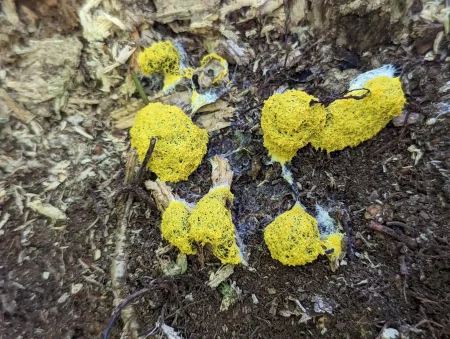
Figure 1.
Marasmius rotula
The Dell
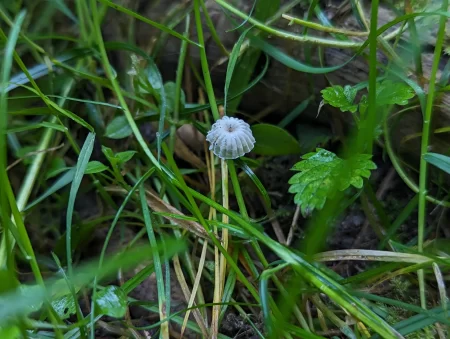
Figure 1.
Stemonitis species
The Dell
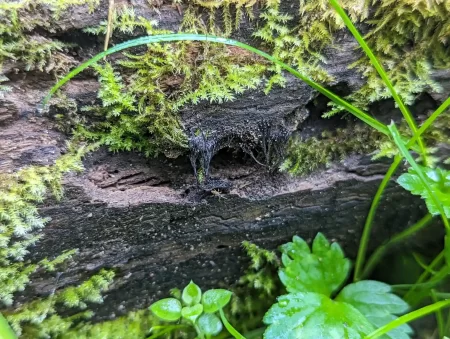
Figure 1.
Laccaria laccata
The Dell
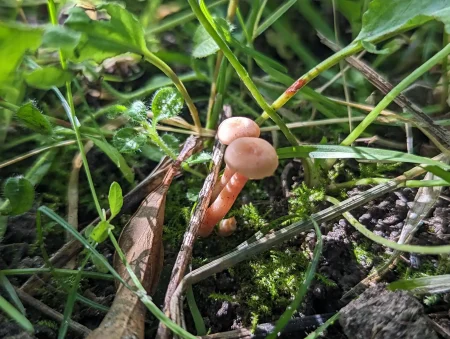
Figure 1.
Russula ochroleuca
The Dell
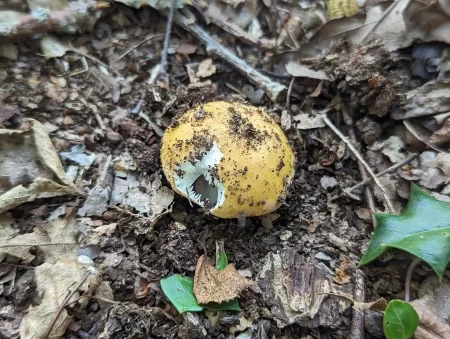
Figure 1.
Parasola conopilea
The Dell
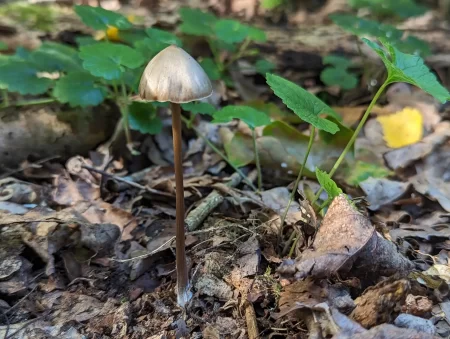
Figure 1.
Russula species
The Dell
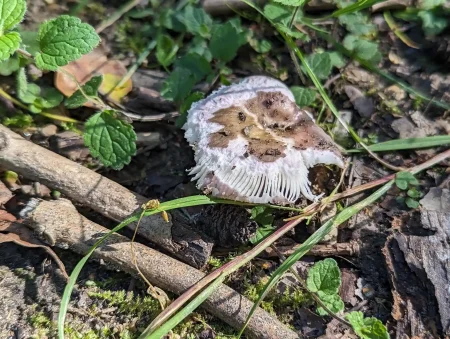
Figure 1.
SANDY GLADE AREA
In a clearing by the Sandy Glade path, I spotted Hemitrichia clavata (Fig. 1.14) on a small rotting log.
On the Fen Trail, just after the Gnarly Oak, I found more Amanita phalloides in the undergrowth.
ENCLOSED AREA
In the Enclosed Area entrance, I found the Clavulina coralloides (Fig. 1.15) that I also saw last year, as well as Collybiopsis ramealis (Fig. 1.16) covering all the rotting wood.
Further in, under a Birch tree, I spotted a Pluteus aurantiorugosus (Fig. 1.17).
On the same mossy fallen trunk from my 2022 survey, I found juvenile Picipes badius (Fig. 1.18), and in a very dense dark area, I spotted a large group of Laccaria tortilis (Fig. 1.19).
Clavulina coralloides
The Enclosed Area
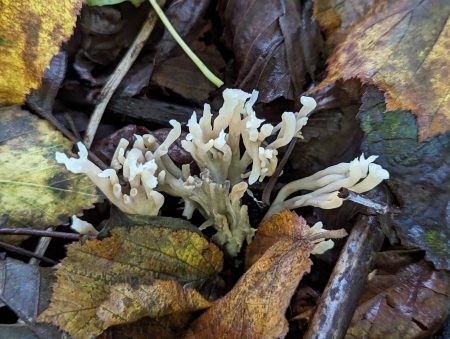
Figure 1.
Collybiopsis ramealis
The Enclosed Area
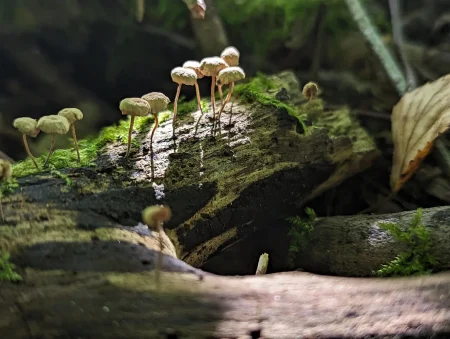
Figure 1.
Pluteus aurantiorugosus
The Enclosed Area
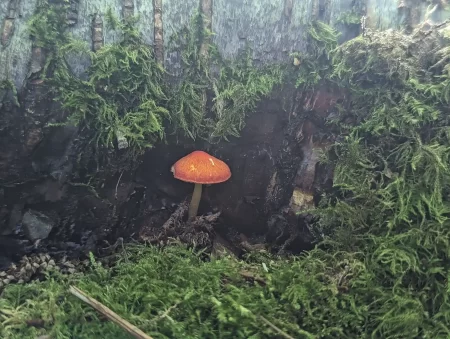
Figure 1.
Picipes badius
The Enclosed Area
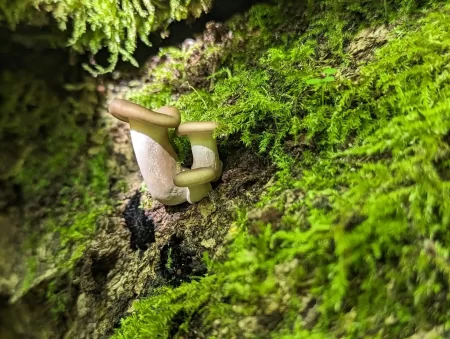
Figure 1.
Laccaria tortilis
The Enclosed Area
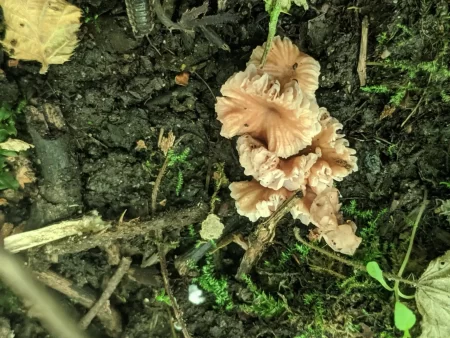
Figure 1.
YEW GROVE AREA
A little further along from the Enclosed Area, at the side of the path, I saw Parasola plicatilis (Fig. 1.20) and identified an odd looking growth as Thelephora penicillata (Fig. 1.21).
Past the Yew Grove, there were large groups of Laccaria bicolour (Fig. 1.22), and interspersed with them, Amanita fulva (Fig. 1.23).
It was here that I came across a small log with fruitbodies of a Chlorociboria species (Fig. 1.24).
Parasola plicatilis
Yew Grove Area
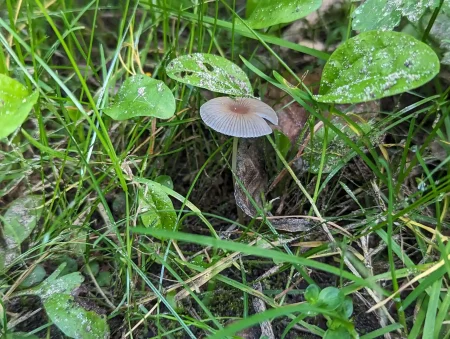
Figure 1.
Thelephora penicillata
Yew Grove Area
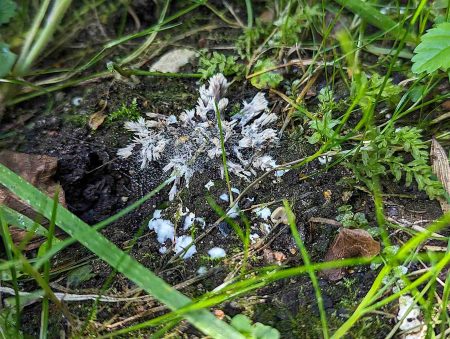
Figure 1.
Laccaria bicolour
Yew Grove Area
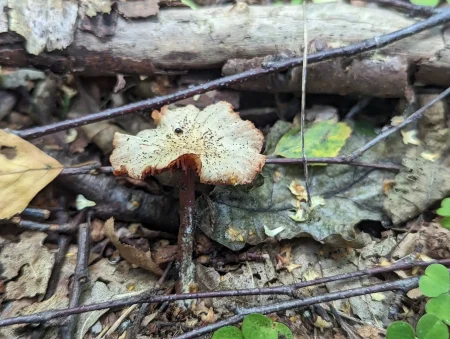
Figure 1.
Amanita fulva
Yew Grove Area
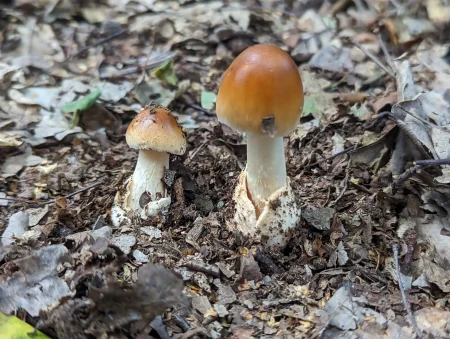
Figure 1.
Chlorociboria species
Yew Grove Area
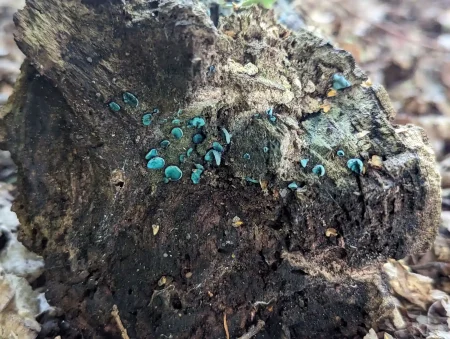
Figure 1.
OUTPOST AREA
Around The Outpost, I discovered a beautiful specimen of Tubifera ferruginosa (Fig. 1.25) on an Alder trunk, as well as Hypholoma fasciculare (Fig. 1.26).
In The Outpost itself, I spotted Calocera viscosa (Fig. 1.27) and an unidentified white specimen which might have been a Phallus impudicus egg (Fig. 1.28).
On both sides of the path before the Pensive, I found Tremella mesenterica (Fig. 1.29) and Scleroderma verrucosum (Fig. 1.30).
Tubifera ferruginosa
The Outpost Area
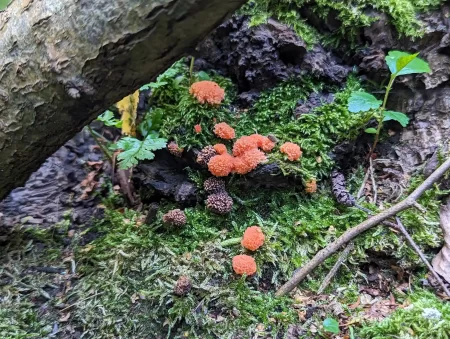
Figure 1.
Hypholoma fasciculare
The Outpost Area
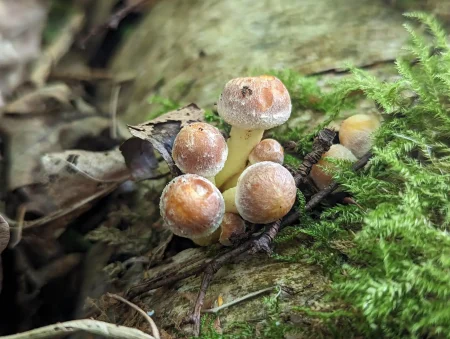
Figure 1.
Calocera viscosa
The Outpost Area
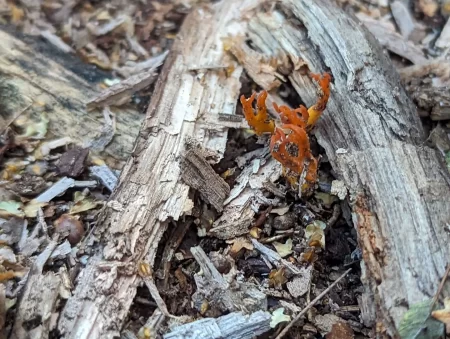
Figure 1.
Phallus impudicus
The Outpost Area
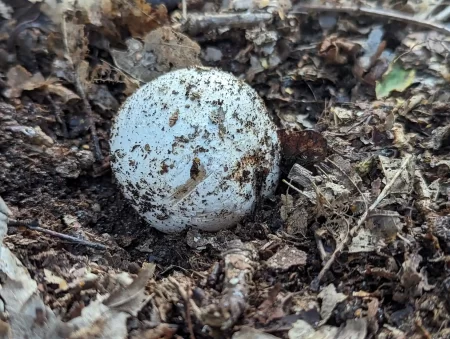
Figure 1.
Tremella mesenterica
The Outpost Area
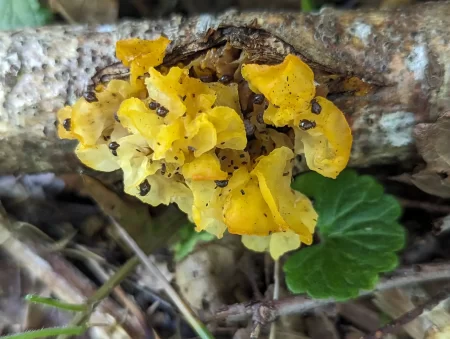
Figure 1.
Scleroderma verrucosum
The Outpost Area
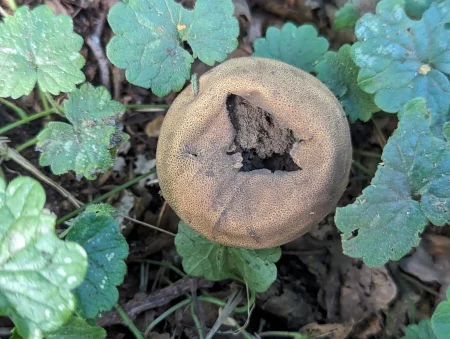
Figure 1.
TRAIL END AREA
On the rotting log piles in the Trail End Area, I spotted Arcyria cinerea (Fig. 1.31), many more Fuligo septica (Fig. 1.32) in various different forms, a Stemonitis species (Fig. 1.33), some disco fungi (Fig. 1.34), Calocera cornea (Fig. 1.35) and an uprooted Amanita rubescens (Fig. 1.36).
Arcyria cinerea
Trail End Area
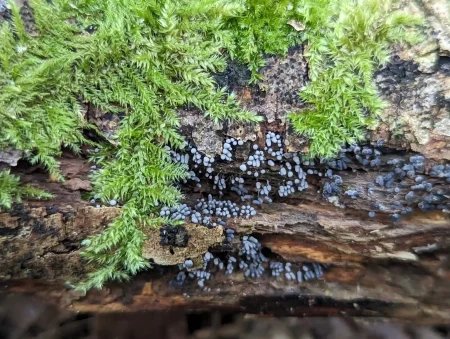
Figure 1.
Fuligo septica
Trail End Area
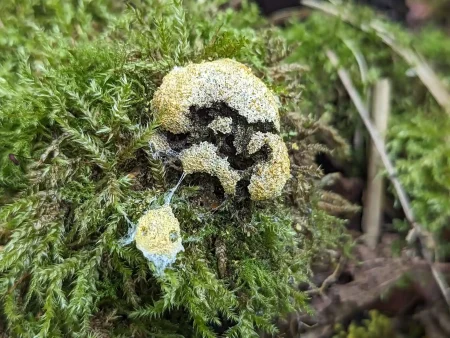
Figure 1.
Stemonitis species
Trail End Area
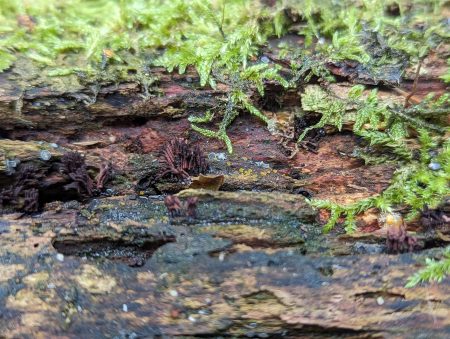
Figure 1.
Disco species
Trail End Area
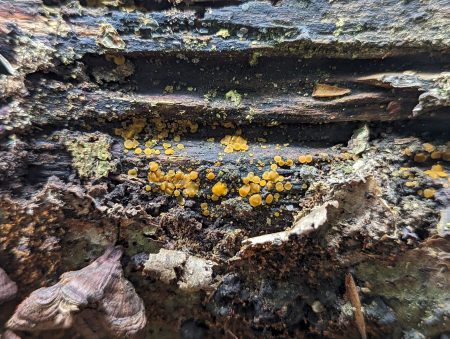
Figure 1.
Calocera cornea
Trail End Area
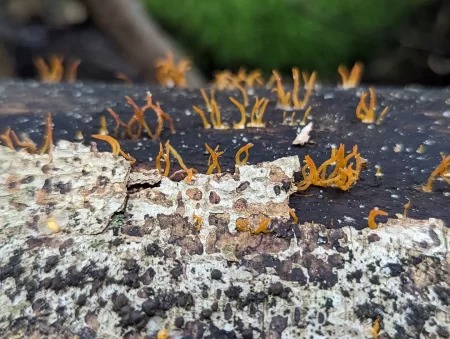
Figure 1.
Amanita rubescens
Trail End Area
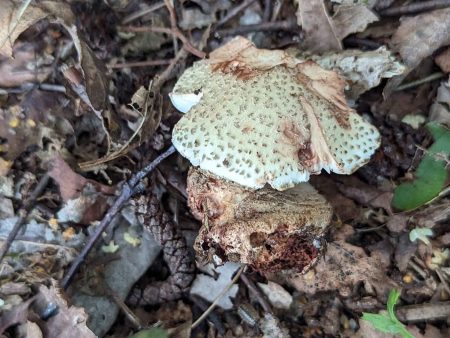
Figure 1.
OTHER
Throughout the reserve woodland, on rotting wood, I found many Ceratiomyxa fruticulosa groups (Fig. 1.38) and Amanita rubescens.
I also found Leccinum scabrum (Fig. 1.39) and what was later identified as juvenile Hydnum repandum (Fig. 1.40) — because of their culinarily prized nature, I am not disclosing their locations.
Amanita phalloides
Everywhere
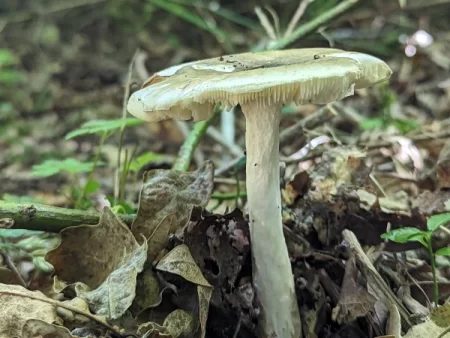
Figure 1.
Ceratiomyxa fruticulosa
Everywhere
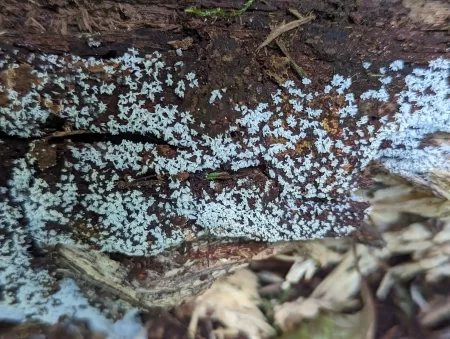
Figure 1.
Leccinum scabrum
Everywhere
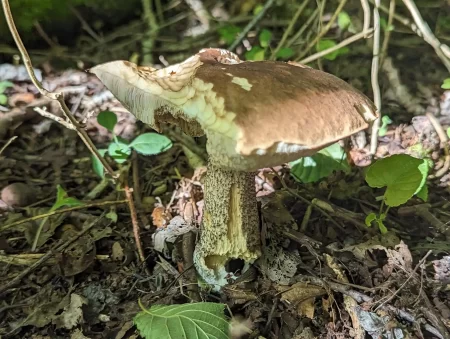
Figure 1.
Hydnum repandum
Everywhere
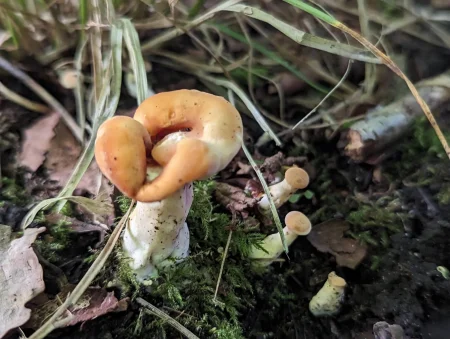
Figure 1.
